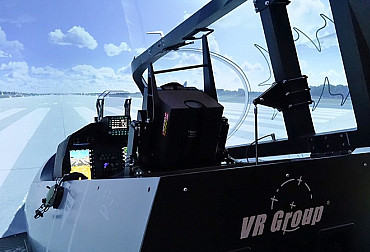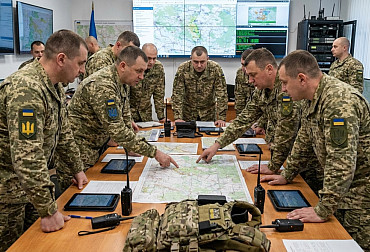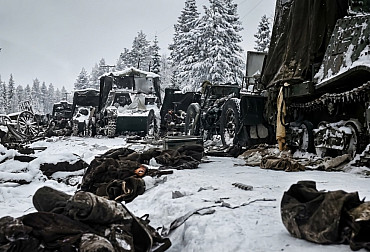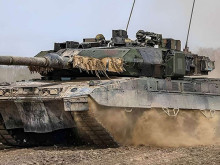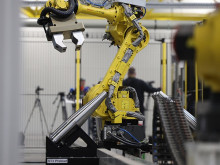Air Force of the Czech Armed Forces is rearming with new American helicopters
The official handover of the first delivered H-1 helicopters took place on 17 August at the 22nd Helicopter Air Base in Náměšt' nad Oslavou with the participation of the Minister of Defence Jana Černochová, Chief of the General Staff of the Czech Armed Forces Chief of the General Staff of the Czech Armed Forces Lieutenant General Karel Řehka and other representatives of the Ministry of Defence, the Army and representatives of the Committee on Foreign Affairs, Defence and Security of the Senate of the Czech Republic and the Committee on Defence of the Senate of the Czech Republic. Both types of helicopters, i.e. the AH-1Z Viper (including a dynamic demonstration) and the UH-1Y Venom were presented, as well as the new simulator for the AH-1Z helicopter type, the construction of which was recently completed. The H-1 simulation centre was built and the installation of the first flight simulator so far was provided by the state enterprise LOM PRAHA.
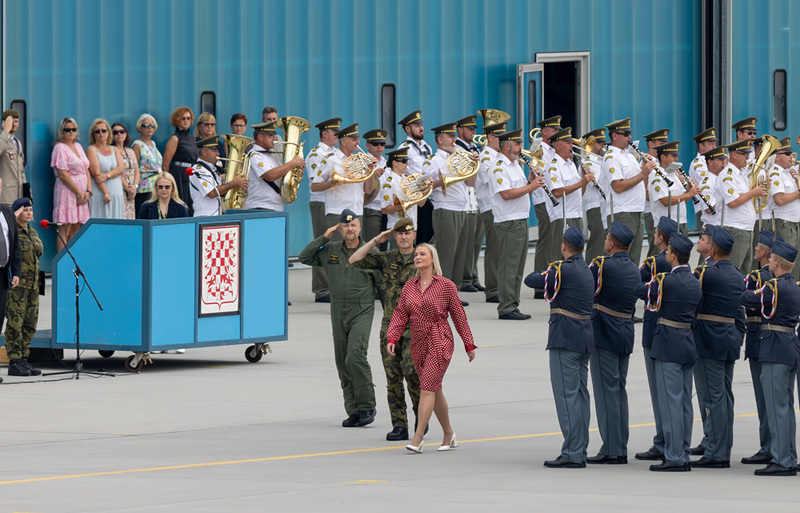 Picture: The official handover of the first delivered H-1 helicopters took place on 17 August at the 22nd Helicopter Air Base in Namesti nad Oslavou with the participation of the Minister of Defence Jana Černochová, Chief of the General Staff of the Czech Armed Forces Lt. Gen. Karel Rehka and other representatives of the Ministry of Defence, the Army and representatives of the Committee on Foreign Affairs, Defence and Security of the Senate of the Czech Republic and the Committee on Defence of the House of Represenatives of the Parliament of the Czech Republic | Jan Suchánek | CZ DEFENCE
Picture: The official handover of the first delivered H-1 helicopters took place on 17 August at the 22nd Helicopter Air Base in Namesti nad Oslavou with the participation of the Minister of Defence Jana Černochová, Chief of the General Staff of the Czech Armed Forces Lt. Gen. Karel Rehka and other representatives of the Ministry of Defence, the Army and representatives of the Committee on Foreign Affairs, Defence and Security of the Senate of the Czech Republic and the Committee on Defence of the House of Represenatives of the Parliament of the Czech Republic | Jan Suchánek | CZ DEFENCE
On 26 July 2023, a C-17 Globemaster transport aircraft landed in Náměšt' and the first two Bell AH-1Z Viper attack helicopters, purchased under the December 2019 contract, were added to the armament of the Czech Air Force. The Czech Republic purchased a total of 12 H-1 helicopters from the Americans (four AH-1Z Viper and eight UH-1Y Venom). This will be followed by another six Viper and two Venom aircraft, which the US government will donate to the Czech Republic in the summer of 2022. The induction of these aircraft into the arsenal marks the end of a multi-year acquisition process that has seen a lot of turbulence. The US helicopters replace Mi-24/35 attack helicopters, some of which are already flying over the frontline in Ukraine in their original Czech camouflage and with Ukrainian insignia. Their arrival marks a small revolution in the capabilities of the Czech Air Force.
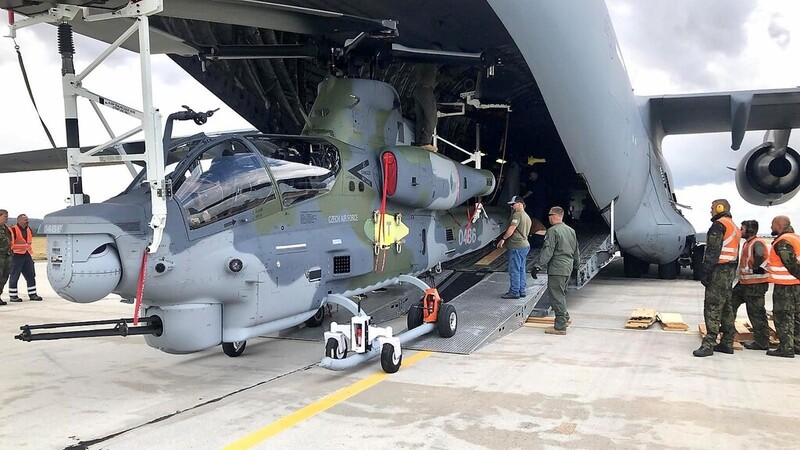 Picture: On July 26, the first two American AH-1Z Viper attack helicopters arrived at the 22nd Helicopter Air Base. | kpt. Jindřiška Budíková / 22.zVrL
Picture: On July 26, the first two American AH-1Z Viper attack helicopters arrived at the 22nd Helicopter Air Base. | kpt. Jindřiška Budíková / 22.zVrL
The need to replace the obsolete Mi-24/35 helicopters and to resolve the dependence on the Russian Federation for spare parts has been intensively addressed by the Ministry of Defence since 2014 at the latest. Initial considerations were in the direction of acquiring light multi-role and later multi-purpose helicopters, which was largely defined from a Western perspective by the Mi-24's non-standard capabilities, combining the characteristics of an attack helicopter for supporting ground forces with the ability to transport personnel and material. After specification and market research, four manufacturers were approached: the Italian company Leonardo, maker of the AW139M, the French company Airbus Helicopter, maker of the AS532, the US company Bell, maker of the UH-1Y helicopter, as well as the US company Sikorsky, maker of the iconic UH-60 Black Hawk. The army requested 12 units, but the bids did not match its expectations.
The helicopters were to be able to perform three basic tasks: ground troop and special forces support, including fire support, troop transport and wounded removal. In addition to the purchase price, this requirement was crucial, and in the Czech Army's opinion, it was met only by a combination of multi-purpose Venom and Bell's Viper combat helicopters, i.e. helicopters of the so-called H-1 system, which also met the requirement that they be helicopters designed from the outset for military needs and proven in combat. The ministry decided to procure them through a government-to-government process, and despite objections from the Italian manufacturer, a contract was signed in December 2019 for the delivery of 8 Venom and 4 Viper at a cost of CZK 14.6 billion excluding VAT. The selection process to the signing of the contract took a full five years.
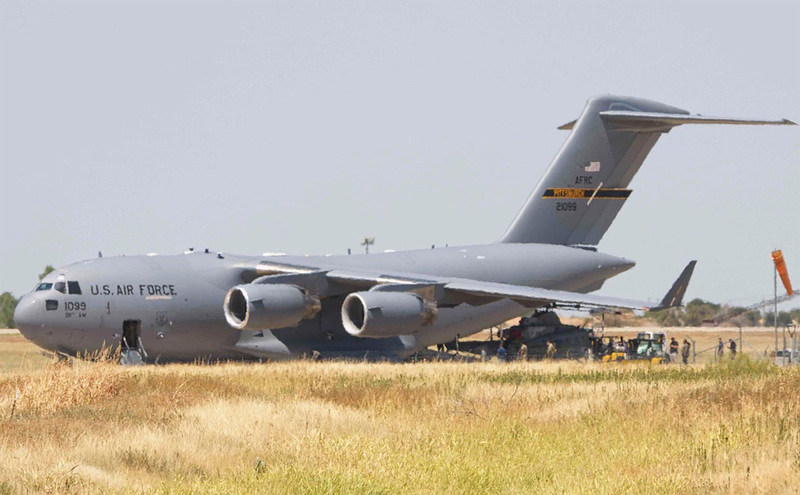 Picture: Loading a UH-1Y multirole helicopter in Czech camouflage into a C-17 Globemaster III transport aircraft | PraiseTheSteph
Picture: Loading a UH-1Y multirole helicopter in Czech camouflage into a C-17 Globemaster III transport aircraft | PraiseTheSteph
After signing the contract, then Defence Minister Lubomír Metnar said: "By the end of 2023, the new helicopters will be in the arsenal of our army. We will obtain modern and field-tested machines, increase our combat capability and at the same time reduce our dependence on Russian equipment." The contract also included weapon systems, ammunition, maintenance, training and personnel training. Overhauls, service repairs, maintenance, spare parts supply and technical support will be provided by the state-owned enterprise LOM PRAHA, which will also operate the training simulators at the simulation centre at the 22nd Helicopter Air Base in Namesti. The construction of the H-1 simulation centre building started in April last year and the hall was completed in December. The new facility was then approved in early February 2023. "I would divide the building into two parts. In the first part there are two large halls. In one hall is the simulator for Viper, and the other will later house Venom. In the second part, which is smaller, there are, for example, two classrooms, office facilities and two mission planning rooms," H-1 Plant Director Milan Obr introduced the facility.
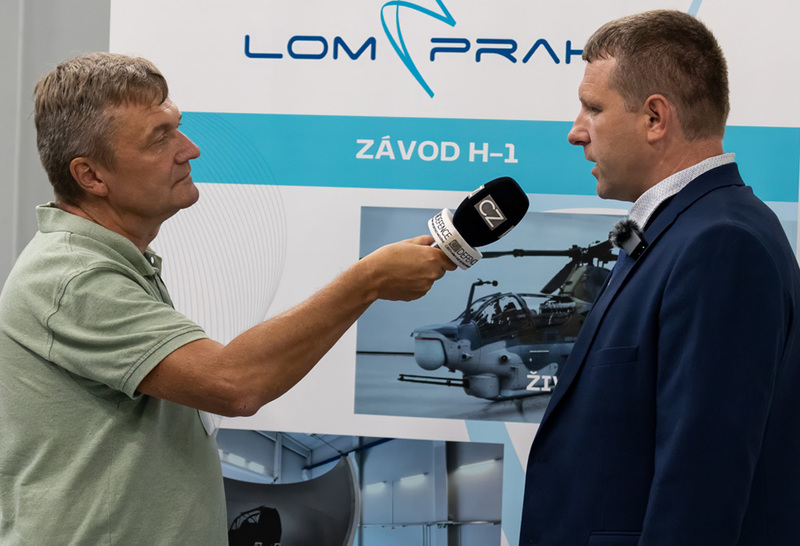 Picture: "I would divide the building into two parts. In the first part there are two large halls. In the second part, which is smaller, there are two classrooms, office facilities and two rooms for mission planning," said Milan Obr. | Jan Suchánek | CZ DEFENCE
Picture: "I would divide the building into two parts. In the first part there are two large halls. In the second part, which is smaller, there are two classrooms, office facilities and two rooms for mission planning," said Milan Obr. | Jan Suchánek | CZ DEFENCE
The centre is secured and operated in an unclassified mode, he said, adding that if there is a requirement for a higher classification regime in the future, everything is ready. For the first two years after the start of operations, all simulator operations will be provided by an American partner and gradually this capability will be transferred to the state-owned enterprise LOM PRAHA. Under the agreement with the Czech Army, the simulator will provide up to 3,000 hours of operation per year. The H-1 simulation centre in Náměšt' nad Oslavou has a capacity of 34 people.
The signing of the contract for the purchase of American helicopters before the settlement of objections by the Italian manufacturer resulted in a record fine of half a billion crowns, which was imposed on the Ministry of Defence by the Office for the Protection of Competition and subsequently confirmed by the court. However, Leonardo did not obtain the injunction. The authority's argument was based on the security interests of the state.
Then, in August 2022, Minister of Defence Jana Černochová announced that the US government would donate eight more H-1 machines to the Czech Republic as part of the compensation for the equipment provided to the invaded Ukraine, bringing the number of Vipers and Venom to 10+10 in the future. These are helicopters retired from service with the US Marine Corps. The Czech Republic is paying for their modernisation and transport to the country. These cannot be quantified precisely at the moment, but compared to the price of the new helicopters they are incomparable," the minister said.
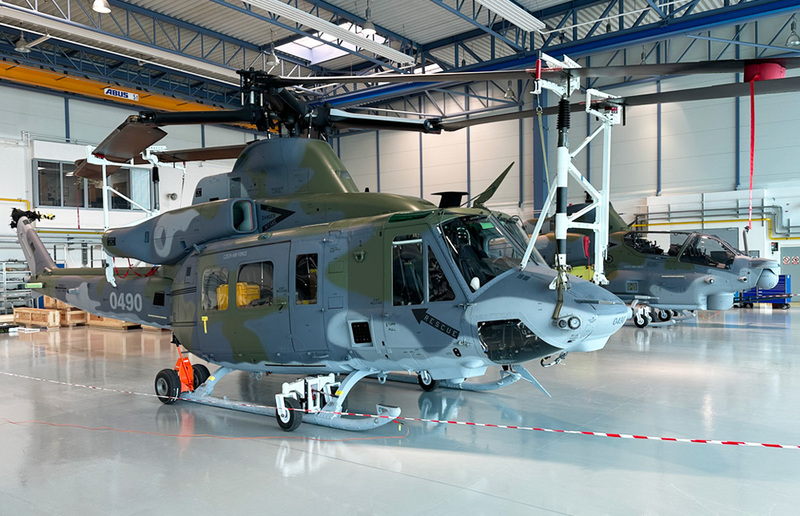 Picture: UH-1Y Venom multirole helicopter, AH-1Z Viper attack helicopter in the background | Michal Pivoňka / CZ DEFENCE
Picture: UH-1Y Venom multirole helicopter, AH-1Z Viper attack helicopter in the background | Michal Pivoňka / CZ DEFENCE
In May, the US State Department approved a contract for the sale of necessary parts and equipment, which shows, among other things, that the upgraded helicopters will receive new engines, navigation units and radios. The Czech Republic is to pay for less than half of the $650 million (CZK 13.8 billion), according to the Defence Ministry, using a $306 million donation it received from the US as compensation for its aid to Ukraine. The upgrade will aim to bring these older machines up to the same condition as the twelve newly purchased helicopters under the December 2019 contract.
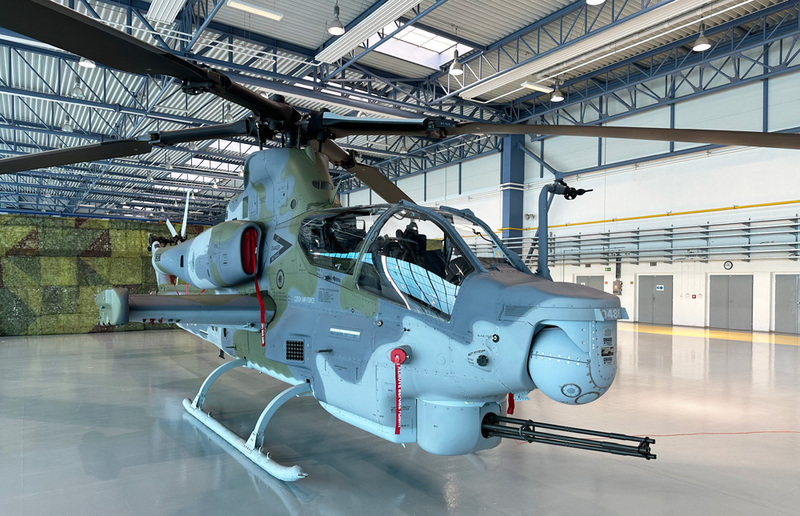 Picture: AH-1Z Viper attack helicopter | Michal Pivoňka / CZ DEFENCE
Picture: AH-1Z Viper attack helicopter | Michal Pivoňka / CZ DEFENCE
Only the United States Marine Corps and the Bahrain Air Force currently have Viper helicopters. Along with the Czech Republic, Slovakia will then also add the combat Vipers to its arsenal, as it will receive 12 helicopters and 500 Hellfire anti-tank missiles at a reduced price from the US in compensation for its MiG-29s provided to Ukraine, or part of the cost will be covered by the United States and part by the European Union. The Venom multi-role helicopters are currently operated only by the US Marine Corps, and the Air Force will be their second user worldwide.
Helicopter manufacturer Bell Textron Inc. completed the H-1 program for the U.S. Marine Corps earlier this year, delivering the 189th Viper produced. It has been delivering H-1 system helicopters to the U.S. armed forces since 1962. The first type was the iconic helicopter nicknamed the Huey, a twin-engine multirole machine whose successors are the 1970 UH-1N, a widely used type worldwide, and the UH-1Y Venom, introduced into the USMC's arsenal in 2008. In 1966 the multirole machines were joined in tandem by the AH-1 Cobra, the first dedicated attack helicopter, upgraded in 1984 with the AH-1W SuperCobra version, and in 2010 "our" AH-1Z Viper entered the USMC arsenal. The current generation of H-1 system machines is characterized primarily by 85% design conformity and interchangeability of spare parts, a feature that promises an extraordinary level of serviceability by facilitating maintenance logistics.
Russian Mi-24/35s will soon be a thing of the past for the Army after 45 years. In June, their crews completed their last live firing missions. The replacement, a combination of two types of H-1 helicopters, will bring entirely new operational capabilities.
The combat Viper can carry a variety of armaments, from AIM-9 Sidewinder missiles, to AGM-179 Joint Air-to-Ground Missiles (JAGM), to a variety of laser-guided and conventional missiles. It is also equipped with a 20mm rotary cannon. Its Target Sight System (TSS) allows operators to distinguish friend from foe at a safe distance, in any weather, day or night - the third-generation TSS, coupled with Top Owl's optimized helmet-mounted display system, provides essential long-range target identification and accuracy for lethal strike capability. As a machine developed for the needs of the Marine Corps, it also boasts the ability to operate in extremely hostile conditions. It shares this characteristic with the multirole Venom, which offers proven capabilities in transport, special operations support, escort missions, search and rescue, reconnaissance and command and control, and can be armed for fire support missions. The rotors of both helicopters can withstand direct hits of up to 23 mm calibre.
During today's official presentation of the first H-1 helicopters delivered, Defence Minister Jana Černochová said that this is not only a welcome to the new American helicopters, but also a farewell to the existing Soviet-built helicopters that our military has been flying for 45 years. The Minister also wished the members of the 22nd Air Base that the new helicopters would serve them well and long and that all helicopter pilots would always return home safely.
Chief of the General Staff of the Czech Armed Forces Lt. Gen. Karel Řehka then reminded in his speech that the new helicopters mean a significant shift in the capabilities (sensory and fire support) of the helicopter air force and also said that the ACR needs modernization, which includes, for example, the introduction of new American helicopters and assured that the modernization of our army will continue.
The director of LOM PRAHA, Jiří Protiva, told CZ DEFENCE that he is very pleased that LOM PRAHA is significantly involved in the whole rearmament project for the H-1 platform for the Czech Army in three areas - life cycle, logistics and simulation centre.
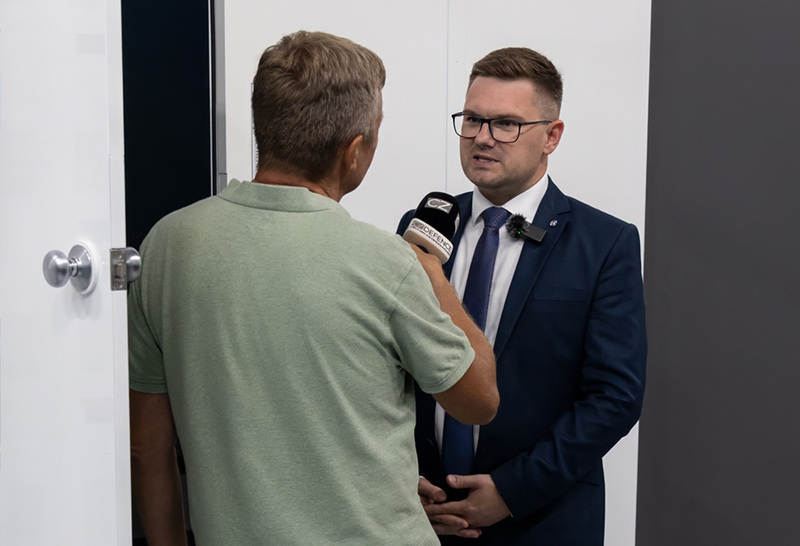 Picture: LOM PRAHA Director Jiří Protiva told CZ DEFENCE that he is very happy that LOM PRAHA is significantly involved in the whole rearmament project for the H-1 platform for the Czech Army. | Jan Suchánek | CZ DEFENCE
Picture: LOM PRAHA Director Jiří Protiva told CZ DEFENCE that he is very happy that LOM PRAHA is significantly involved in the whole rearmament project for the H-1 platform for the Czech Army. | Jan Suchánek | CZ DEFENCE
It is the training support that Director Protiva sees as essential for pilots to be able to get into the machines and protect the Czech skies with the new Viper and Venom helicopters.
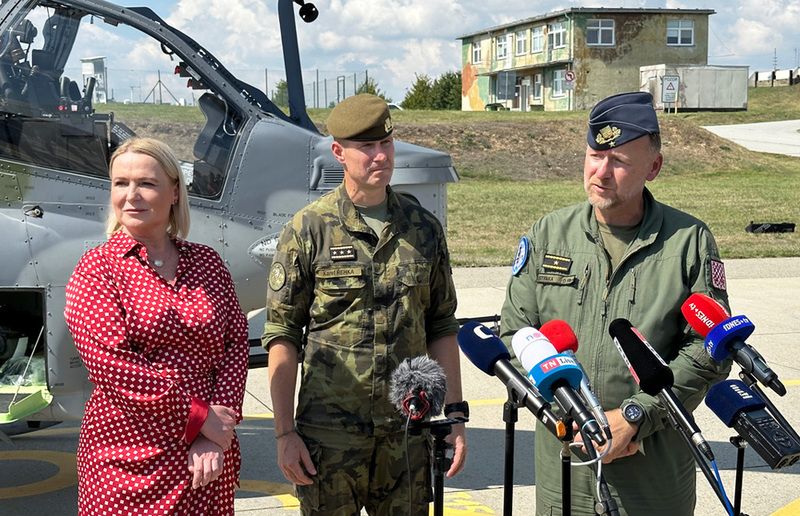 Picture: Minister of Defence Jana Černochová, Chief of the General Staff of the Czech Armed Forces Lt. Gen. Karel Řehka and Commander of the 22nd Helicopter Air Base Brig. Gen. Rudolf Straka | Michal Pivoňka / CZ DEFENCE
Picture: Minister of Defence Jana Černochová, Chief of the General Staff of the Czech Armed Forces Lt. Gen. Karel Řehka and Commander of the 22nd Helicopter Air Base Brig. Gen. Rudolf Straka | Michal Pivoňka / CZ DEFENCE
In connection with the official handover of the first machines to the Czech Army for use, we asked the commander of the 22nd Helicopter Air Base, Brigadier General Rudolf Straka, a few questions:
On the modern battlefield we can see, among other things, the mass deployment of man-portable anti-aircraft missile sets (MANPADs). What advantages does the AH-1Z Viper helicopter (e.g. radar/thermal signature, etc.) have over these assets compared to the Mi-24/35 attack helicopter?
The AH-1Z Viper helicopter has a huge advantage over its predecessor in that it is equipped with advanced self-protection systems that the Mi-24/35 helicopter lacked. The Mi-24/35 helicopters were only equipped with the outdated Radar Warning Receiver (RWR), which works by alerting the pilot if the helicopter is hit by radar, with information on the direction of the approximate location of the radar source, as well as information on the type of radar if the system's library is up to date, which unfortunately it was not. This was basically all that the Mi-24/35 helicopter system allowed. No warning system against the MANPADS systems on the Mi-24/35 helicopter was used within the Army.
In general, it can be said about the AH-1Z Viper helicopter that the pilot receives more information from the self-protection systems about a given threat, can distinguish and detect many more of these threats, prioritise them according to the threat level, and at the same time, in the event of a direct threat to the helicopter, automatically respond to these threats. Thus, the system can operate not only in manual mode, but also automatically (according to the system settings by the pilot). In addition, compared to the Mi-24/35 helicopter, the Viper systems can also detect e.g. laser irradiation of the helicopter, or detect the launch of a heat-seeking missile against the helicopter from, for example, a portable anti-aircraft missile complex. These systems are directly linked to the deceptive target scramblers, giving the pilot not only more information about a wider range of threats, but can also automatically respond to these threats by launching adequate deceptive targets, thus providing maximum protection to the helicopter and the crew on the battlefield.
In addition, the training of crews in the use of these systems will be highly effective, especially thanks to the AH-1Z Viper helicopter simulator that was acquired with the purchase of these helicopters. This simulator will not only allow for intensive training, but also for the preparation of an almost unlimited number of scenarios and situations that pilots may encounter on the real battlefield.
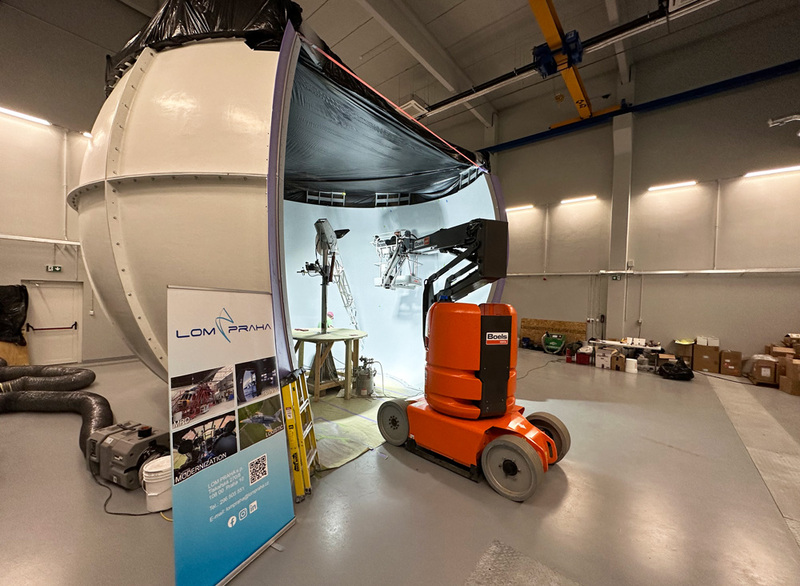 Picture: Final installation of the Viper combat simulator | Michal Pivoňka / CZ DEFENCE
Picture: Final installation of the Viper combat simulator | Michal Pivoňka / CZ DEFENCE
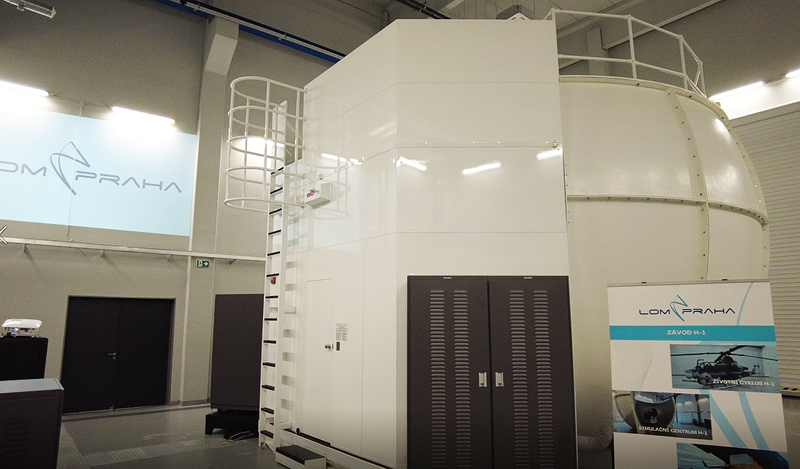 Picture: Completed simulator for Viper combat helicopters | Michal Pivoňka / CZ DEFENCE
Picture: Completed simulator for Viper combat helicopters | Michal Pivoňka / CZ DEFENCE
Is it envisaged that Viper and Venom helicopters will be included in the battlefield information sharing system (passing the position and types of targets to a higher level of command for subsequent use, e.g. for artillery)?
Yes, among the tasks that the H-1 system helicopters can perform are aerial reconnaissance, combat reconnaissance tasks and these helicopters can also act as an airborne forward air guidance platform, which is enabled by the instrumentation and sensor equipment of these helicopters. Thus, they can be used to search for targets, identify them, and possibly coordinate fires on these targets by other means, whether aircraft, helicopters, drones or artillery.
Do the Viper attack helicopters have any limitations compared to the Mi-24/35 (armament carrying capacity, etc.), apart from the ability to carry airdrops, of course?
The Mi-24/35 helicopters, due to the hermetically sealed crew cockpit, could be deployed in a chemical or radioactive contaminated environment, which the H-1 helicopters do not allow without endangering the crew, but this is true for the vast majority of other helicopter types in the world.
Considering only weight, it is true that Viper helicopters carry a slightly smaller amount of armament, but this is on the other hand compensated by the helicopter's lower overall weight, which makes it more maneuverable. In addition, the Viper helicopter's armament is more effective and, thanks to the helicopter's systems and sensors, much more accurate. The Viper can therefore do more work on the battlefield with less ammunition. In the case of anti-tank guided missiles, however, the Mi-24/35 helicopter could only carry a maximum of 8 missiles, while the Viper helicopter can carry up to 16 at a time. However, from all other points of view, the Viper helicopter outperforms the Mi-24/35 helicopters in all respects.
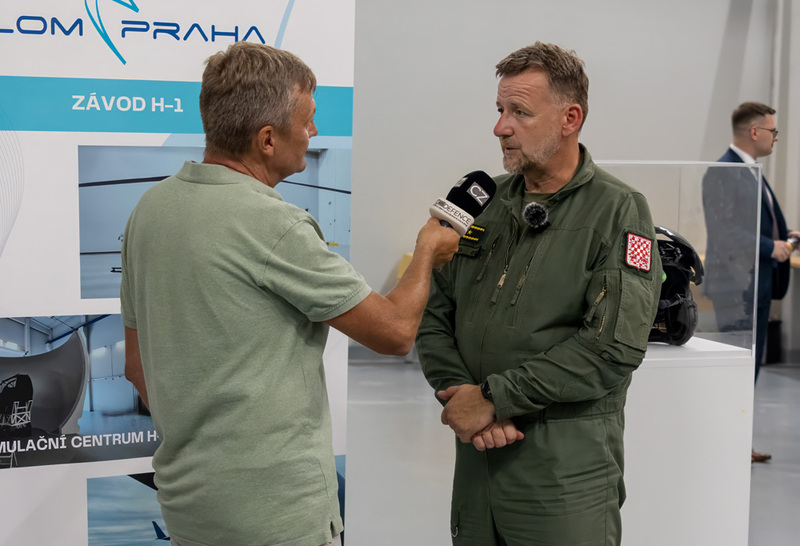 Picture: "The AH-1Z Viper helicopter has a huge advantage over its predecessor in that it is equipped with modern self-protection systems, which the Mi-24/35 helicopter lacked," said CZ DEFENCE Commander of the 22nd Helicopter Air Base Brig. Gen. | Jan Suchánek | CZ DEFENCE
Picture: "The AH-1Z Viper helicopter has a huge advantage over its predecessor in that it is equipped with modern self-protection systems, which the Mi-24/35 helicopter lacked," said CZ DEFENCE Commander of the 22nd Helicopter Air Base Brig. Gen. | Jan Suchánek | CZ DEFENCE
Is the training of pilots and operators in the more modern Viper attack helicopter more complex than similar training in the Mi-24/35 helicopter?
The training system is completely different from the Mi-24/35 helicopter. The Mi-24/35 helicopter has diametrically different instrumentation and other equipment in both cabins and has a directly designated crew layout. The front cabin is designed for a pilot-operator whose main task is navigation and operation of weapons systems that cannot be operated from the rear cabin (anti-tank missiles, operation of the rotary front turret machine gun). On the other hand, the rear cabin is intended for the pilot-captain of the helicopter, who has full instrumentation at his disposal and is the only one who can, for example, start and stop the engines and operate the weapons suspended under the wings.
The Viper helicopter cabins are identical except for minor details and allow full operation of all helicopter systems and equipment from both cabins, and there is no fixed position where the pilot-captain and co-pilot must sit. This also makes it unnecessary to have a separate training system for the pilot-operator and the pilot-captain of the helicopter, but there is a single pilot training that takes place from both cabins of the helicopter. In the case of a mission, the helicopter captain himself determines which cabin he will be in and what activity he will perform. Generally speaking, the view from the helicopter makes it easier to pilot from the front cabin, especially for low-altitude flights, but it is not a requirement. So, for example, he may decide to let the co-pilot fly and instead operate the helicopter's sensors and weapons himself and take tactical decisions during the mission. This gives the crew the flexibility to divide the work without the limitations imposed by the helicopter's design, and there is also full interchangeability of the two pilots during the flight in the event of injury or death of one of them.
Training on the Viper also places more emphasis on the control of the various systems and equipment of the helicopter, as it has these systems unlike the Mi-24/35 helicopter. Thus, training in piloting the helicopter is comparable in difficulty, but there are many additional skills and equipment that the crew must learn to operate effectively. The presence of the Viper helicopter simulator directly at the helicopter base in Náměšt' nad Oslavou is again a great help.
The acquisition of helicopters including the simulator and the possibility of controlling systems from both helicopter cabins will significantly simplify and streamline the pilot training system. The training will take a shorter time and it will not be necessary to repeat most of the training during the transition from the front to the rear cabin of the helicopter. This will save not only money but especially flight hours that can be devoted to the development of additional skills.
How service intensive are the Viper and Venom helicopters compared to the existing Mi-24/35 helicopters? Can you tell us what is the ratio of routine maintenance of helicopters in the field and in specialized workshops?
The new helicopters have an overall simpler maintenance system. It is a zero-generation operation and the maintenance focus is shifted to the operational (squadron) level. This means that the operational squadron performs most of the scheduled maintenance itself, up to the D-level (2,100 flight hours). The H-1 helicopter maintenance system generates twice the resources of the Mi series over the same time period (1 year). Replacements of heavy units are also much easier due to their good availability in the airframe. Just for comparison, it takes three weeks to replace the main reducer on the Mi series and three days on the H-1 system. The 85% parts match on both AH-1Z and UH-1Y is also a huge advantage.
















